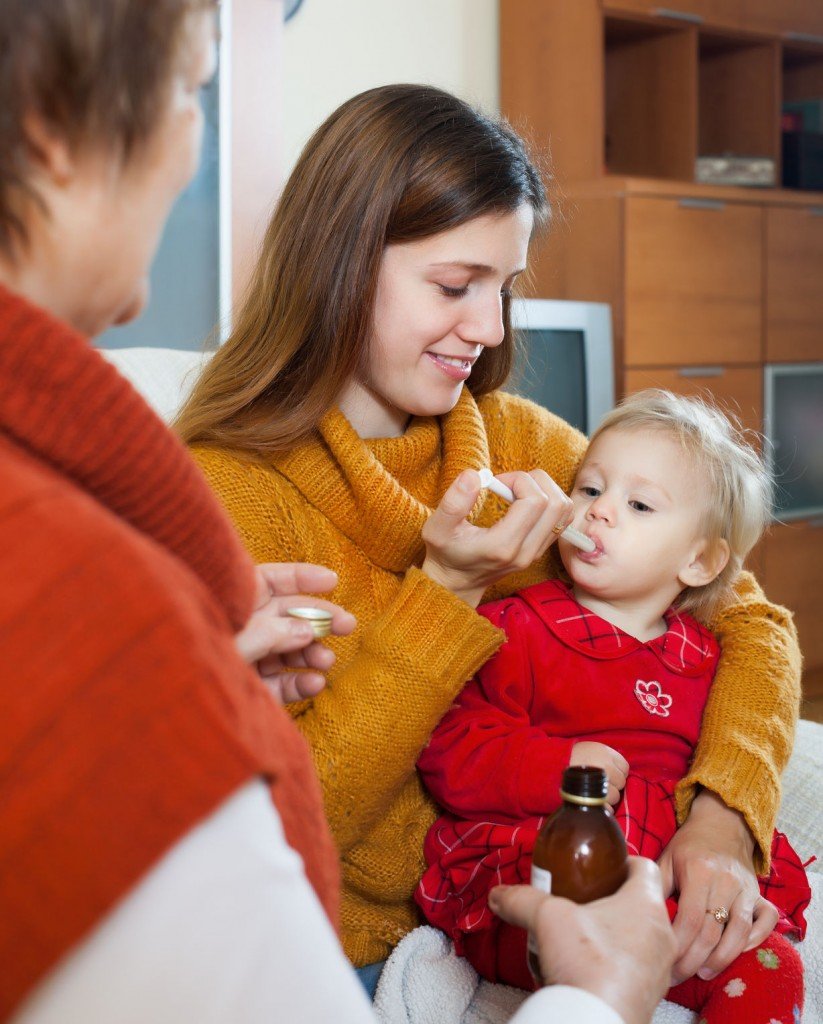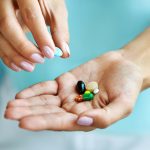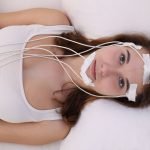NDs are trained to be excellent primary care practitioners and are confident in their abilities to care for their adult populations. When it comes to children, however, some providers feel they fall short in their knowledge and may be intimidated to provide naturopathic treatment. With just a few guidelines, this apprehension can change. I fully believe that treating children with naturopathic medicine is the way that we can make the most change in the healthcare system. When we can work with kids from a very young age, even as newborns, we can affect outcomes and decrease disease rates for their entire lives. We also positively affect the parents and siblings. I strongly encourage us as a profession to support our further training in pediatric medicine, so everyone will feel confident in treating this population.
Methods of Medicine Delivery for Children
Liquids
There are many options for liquid medicines for children. We can even give these liquids to newborns when we are careful with ingredients and delivery. Herbal glycerites can be dosed easily with Clark’s rule or Young’s rule (see Table) and are easy to give because of their sweet taste. Herbal tinctures can also be used in drop dosages for children. You can put the tincture in hot water to burn off the alcohol if desired, or combine tinctures with glycerites to disguise the taste. Herbal syrups are often a palatable option (with honey, only use after age 1), and omega 3-6-9 oils come in numerous tasty blended options or plain. Many children don’t even mind the taste of fish oil! Finally, herbal teas can be brewed as for an adult and then dosed appropriately using Clark’s or Young’s rule.

How to Administer Liquids
The easiest way to administer liquids orally to an infant is to use a plastic eyedropper or a medicine dropper, and dispense along the cheek, so baby doesn’t choke. We are typically only using 1-2 mL at a time. Herbal baths or poultices are another effective method, especially for newborns. For older children, you can put liquids in a juice base (orange, pomegranate, blueberry, or grape work best) or in a smoothie. Some children even do fine taking the medicines straight, especially the glycerites, and followed with a little juice or something tasty. Herbal teas with a little juice freeze well as popsicles and feel good on swollen gums or sore throats.
Powders
There are numerous prepared powders for children, and also raw herb powders that can typically be used based on Clark’s or Youngs’ rule. In addition, you can open herbal or nutrient capsules or crush tablets. Be sure that the formula you use includes ingredients that are safe for children and beware that some of these formulas taste terrible! However, I like to incorporate Mary Poppin’s philosophy…a spoonful of sugar definitely helps the medicine go down.
How to Administer Powders
Some powders, such as probiotics, will dissolve well in liquids, so in this case, juices or smoothies work well. However, most powders will do better in a tasty bite of food. This is where I am not afraid to use things like chocolate syrup, blueberry syrup, and honey to get those medicines in. Some other good covers include applesauce, yogurt, nut or seed butters (especially for oils), jelly, and ketchup.
Chewables
Chewable supplements are typically for ages 2 and up, however there may be the occasional 18 month old who will do fine with them. For gummies, however, please wait until age 2 as they have an increased risk of choking. The biggest problem with commercially available chewables is often the taste. Samples in the office are key for children, so you don’t send parents home with something the child won’t take. Some softgels are also appropriate for chewing, such as fish oils. The child can always spit out the softgel rather than swallow it.
Homeopathics
This is a category that is obviously favorable for children, as they are dissolvable and taste sweet. Some products are even fast dissolving, and it’s okay if the child chews the tablets as well. For infants, it can be helpful to dissolve the tablets in about 1 oz water and give ½-1 tsp of water per dose. Be sure to avoid metal spoons for stirring, and use a glass or wood stirrer instead. By 9 or so months, you can give the pellets directly in the mouth. For newborns or preemies, you can even gently rub the homeopathic on the skin, in the belly button, or on the fontanelle.
Miscellaneous
Occasionally we can give medicines to infants or young children in the form of rectal suppositories, particularly during fevers, vomiting, or constipation episodes. Have parents insert them during sleep; this usually works quite well. In addition, for some children who have taste issues or a strong gag reflex (such as in autism), you can use transdermal medications. These are usually formulated through compounding pharmacies in a phospholipid base. Many nutrients work quite well this way.
Swallowing Medicines
Most children will have the motor capability to swallow medications by age 4-7. Males tend to be ready around age 5 or 6, while females are ready around age 4 or 5. It is helpful to teach children how to swallow as soon as they can, as it makes medicine delivery that much more convenient. Here is the simple way to teach them: for capsules – put on the tongue, take a small bit of water, put your head down and look down at your shoes. The capsules are light and float up in the water and easily go down the esophagus. For tablets, put one on the tongue, take a small bit of water, and put the head back. They are heavier, so they sink and go down in this position. It is best to start with something they don’t mind swallowing (eg, little pieces of candy – organic, of course).
Pediatric Dosing Guidelines
Herbal and Nutritional Formulas
I tend to use Clark’s rule for most dosing as it is a bit more accurate, since weight can vary so much with age. You can use this formula for pretty much any supplement, as long as you know the typical adult dose. You will, of course, want to be very careful with toxic herbs (eg, Lobelia and Ma huang). This is where you will use drop dosages only. For some herbs (eg, Phytolacca), if there is an alternative that is safer (eg, Galium), then use that instead.
Example: If you want to treat a child who is 25 lbs with vitamin C for a viral infection, you can use the typical adult dose of 1000 mg QID. Therefore, 25 lbs/150 lbs = 1/6th the adult dose. The child’s dose = 166 mg QID. As vitamin C is safe and water soluble, you can safely round up to the next increment available, such as 175 mg or even 200 mg per dose. If you are looking at giving any fat-soluble vitamins, err on the side of caution and round down the dose. Vitamin A should not be used for infants as it can present as pseudotumor cerebri with hydrocephalus. Be careful with fish oils/cod liver oil/DHA products as they sometimes contain vitamin A. Beta-carotene is fine to use, as it is water-soluble. Vitamin D can be given directly to an infant, typically at 400 IU QD, or can be dosed through the breastfeeding mother, as 10% passes through the milk.
Homeopathics
You can safely use any dosage as long as it is appropriate, from 3X to 10M. However I often choose 6C, 12C, or 30C for acute situations. With these, you can dose frequently, anywhere from once every 15 minutes for sudden and high fevers, to TID-QID for acute upper respiratory infections. I tend to see the most aggravation from 200C, so I use either 30C or 1M for constitutional remedies. As most kids have a strong vital force, you can dose more frequently than you might an adult. Remember that babies are part of the mother-baby unit until about 3 years of age, so you can give mother’s constitutional remedy to the baby if it is indicated.
 Tamara Cullen, ND is a 1999 graduate of Bastyr University and practices primary care medicine in Seattle. She currently serves as adjunct faculty at the Bastyr Center for Natural Health and as the advanced pediatrics professor at Bastyr University. She is a founding board member of the newly formed PedANP, and co-author of The Baby Cuisine Cookbook. She spends the majority of her time at her private practice, Naturopathic Family Medicine, and loves to swim, run, travel and spend time with her family.
Tamara Cullen, ND is a 1999 graduate of Bastyr University and practices primary care medicine in Seattle. She currently serves as adjunct faculty at the Bastyr Center for Natural Health and as the advanced pediatrics professor at Bastyr University. She is a founding board member of the newly formed PedANP, and co-author of The Baby Cuisine Cookbook. She spends the majority of her time at her private practice, Naturopathic Family Medicine, and loves to swim, run, travel and spend time with her family.






